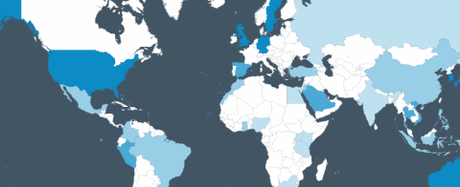
“Scientists have discovered an enormous energy source for the world…located in the poorest countries in the world,” announced Center for Strategic and International Studies (CSIS) President John Hamre recently. “If we tap it, this energy source will double or triple GDP growth in those countries.”
The resource Hamre was discussing is not a fossil fuel like coal or oil and is not a new form of renewable energy. His remarks were a reference to the 1.8 billion young people in the world between the ages of 10 and 24. This youth population is the largest the world has ever seen and their contributions to society have drastic implications for the development of emerging markets and fragile states. If youth become productive civic and economic participants in their communities, the benefits are immense. However, when young people are forced to the fringes of society and do not have sufficient opportunities to participate in society the consequences can be devastating.
In order to help policy, society, and business leaders better understand how to ensure that young people are best positioned to be drivers of growth and development, CSIS recently developed the Global Youth Wellbeing Index in partnership with the International Youth Foundation and Hilton Worldwide.
The index seeks to measure several elements of youth wellbeing in countries around the world so that future investments in youth can be targeted to have the greatest impact. These components include citizen participation, economic opportunity, education, health information & communications technology (ICT), and safety & security. The unique partnership between policy institute, NGO, and business that created this index is a testament to the fact that overcoming challenges associated with these components cannot be accomplished by any one sector of society.
While the index provides a very good overview of which elements need work, implementers, donors and policymakers must think strategically about how to go about improving the environment. Since the six components are interconnected changes in one will undoubtedly have effects on the others. For example, access to ICT can promote increases in the level of education available to youth, which has been shown to be linked to economic opportunity. Similarly, increased citizen participation can ensure that the voice of youth populations is heard in debates about policies that will affect them thereby leading to increases across the board.
Regardless of how various actors attempt to influence youth wellbeing, there is one thing that is absolutely necessary: youth must be involved and have the opportunity to contribute to the process. The new index is a good place to start as it offers a better idea of the problems so that better solutions can be developed. However, a seat at the table is required to give young people a sense of ownership and contribution to their own development.
As grassroots mobilizers and representative voices, civil society organizations have an important role to play in making sure this happens. Since business has the ability to influence all six elements that the index evaluates, private sector groups are especially vital in this effort. Business associations and chambers of commerce around the world should ensure that youth is adequately represented on various committees and involved in programming. Achieving this in itself will help to increase wellbeing most directly in terms of economic opportunity and citizen participation.
The world’s youth population is indeed an untapped energy source that can drastically transform the world. What is more, roughly 85 percent of youth live in emerging markets or fragile states. Only when they have the ability to truly engage in the development of their own wellbeing will their potential be unleashed.
Frank Stroker is an Assistant Program Officer for Global Programs at CIPE.

